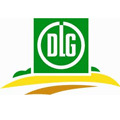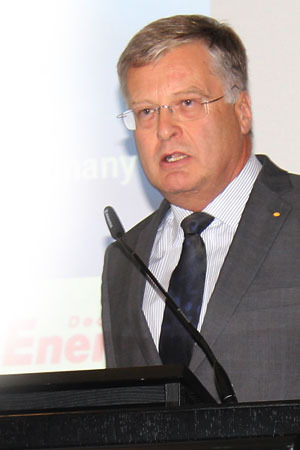 The development and selection of antibiotic resistances have been major issues for some time now, not only in Germany but also worldwide. In the European Union a number of possible ways of tackling the problem are being considered. In Germany it is now the declared political intent to sustainably lower the quantities of antibiotics used in veterinarian medicine. The focus here is on the finishing sector, as according to the findings of the study by the German Institute of Medical Documentation and Information (DIMDI), this is the field where by far the greatest quantity of antibiotics is used. The matter has already found its way into the draft of a 16th Amendment to the Medicinal Products Act (known by its German acronym AMG). There are also similar considerations at EU level. The Bundesverband Praktizierender Tierärzte (bpt - Federal Association of Practising Veterinarians) expressly welcomes responsible use of antibiotics in animal husbandry, but does not consider the path chosen in the 16th Amendment to the AMG to be helpful in achieving the objective. In the view of the Association, effective reduction of antibiotic consumption can only be achieved by improving animal health, but not by capping antibiotic quantities or restricting therapeutic options.
The development and selection of antibiotic resistances have been major issues for some time now, not only in Germany but also worldwide. In the European Union a number of possible ways of tackling the problem are being considered. In Germany it is now the declared political intent to sustainably lower the quantities of antibiotics used in veterinarian medicine. The focus here is on the finishing sector, as according to the findings of the study by the German Institute of Medical Documentation and Information (DIMDI), this is the field where by far the greatest quantity of antibiotics is used. The matter has already found its way into the draft of a 16th Amendment to the Medicinal Products Act (known by its German acronym AMG). There are also similar considerations at EU level. The Bundesverband Praktizierender Tierärzte (bpt - Federal Association of Practising Veterinarians) expressly welcomes responsible use of antibiotics in animal husbandry, but does not consider the path chosen in the 16th Amendment to the AMG to be helpful in achieving the objective. In the view of the Association, effective reduction of antibiotic consumption can only be achieved by improving animal health, but not by capping antibiotic quantities or restricting therapeutic options.
 The transnational objective of modern animal health policy must be to avoid illnesses by preventive measures such as vaccinations, hygiene, husbandry management, husbandry conditions etc. However, despite all efforts there will still be diseases in animal herds and stocks. And then the principle "sick animals have a right to treatment" must apply. Any other approach would be contrary to animal welfare and responsible animal husbandry. Moreover, after a diagnosis has been made it is often not possible to do without antibiotics. Veterinarians are certainly aware that the possible development of resistances and the pressure of selection must be considered carefully when using antibiotics against pathogens. That is why in Germany, at the initiative of bpt and the German Farmers Union, a comprehensive antibiotic monitoring system in the poultry and pig finishing sector has been developed via QS-System. Work commenced already in April on surveying the use of antibiotics in the poultry sector, followed by use on pig finishing farms in September. Work on the cattle sector – especially where calves are concerned – will probably follow at a later date. The objective of the monitoring operation is to obtain more concrete information on the basis of farm-related data – individually, regionally, and related to individual product sectors ("who uses antibiotics, when, where, why and how many"), and thus to push ahead with optimizing the use of antibiotics in animal husbandry.
The transnational objective of modern animal health policy must be to avoid illnesses by preventive measures such as vaccinations, hygiene, husbandry management, husbandry conditions etc. However, despite all efforts there will still be diseases in animal herds and stocks. And then the principle "sick animals have a right to treatment" must apply. Any other approach would be contrary to animal welfare and responsible animal husbandry. Moreover, after a diagnosis has been made it is often not possible to do without antibiotics. Veterinarians are certainly aware that the possible development of resistances and the pressure of selection must be considered carefully when using antibiotics against pathogens. That is why in Germany, at the initiative of bpt and the German Farmers Union, a comprehensive antibiotic monitoring system in the poultry and pig finishing sector has been developed via QS-System. Work commenced already in April on surveying the use of antibiotics in the poultry sector, followed by use on pig finishing farms in September. Work on the cattle sector – especially where calves are concerned – will probably follow at a later date. The objective of the monitoring operation is to obtain more concrete information on the basis of farm-related data – individually, regionally, and related to individual product sectors ("who uses antibiotics, when, where, why and how many"), and thus to push ahead with optimizing the use of antibiotics in animal husbandry.
By contrast, in the German draft for a 16th Amendment to the Medicinal Products Act, there is mention of an antibiotic minimizing concept, but in reality this will only create an additional monitoring instrument again. In the view of bpt, the therapy index calculated is not sufficient to identify actual problems on a farm and take appropriate countermeasures.
The treatment options for sick animals must not be restricted at the cost of animal welfare, nor may resistances be additionally promoted by narrowing the range of active ingredients admitted. On the contrary, in order to prevent infectious illnesses greater attention should be paid to using vaccines, and faster and more precise identification of infectious agents should also be enabled by targeted organ removal complying with specific conditions. Furthermore, providing more information and consultancy for animal farmers about the occurrence of antibiotic resistances can be an effective preventive measure.
In the opinion of bpt, sustainable reduction of antibiotic use can only realistically be achieved by improving animal health. However, the animal health aspect is totally neglected in the current German draft law. Although it is known that the way to tackle relevant animal health problems in the finishing sector is above all via the mother animals and in rearing of young stock, these connections are left out of consideration completely. The use of antibiotics in finishing is ultimately also a consequence of problems in the upstream areas. A concept for minimizing antibiotic use must therefore not exclude these upstream areas, but should instead begin there and, for example, provide clear specifications about vaccinations with which the development of bacterial infections in finishing operations can be counteracted.
Conclusion: the practising veterinarians are closely involved in animal husbandry and the production processes. They are critically responsible for the health, maintenance of performance levels and prevention of diseases in the animals and thus contribute substantially to securing food production, while taking animal welfare and economic efficiency into account. Through their well-founded scientific training and obligatory regular further training sessions, veterinarians are enabled to assess the needs of animals, their health and their well-being in accordance with the current state of scientific knowledge. This expertise is the prerequisite for animal husbandry in line with animal welfare and realization of this in close cooperation with the farmers. Both nationally and at EU level there must not be any competition concerning excessively ambitious antibiotic reduction goals. Decisions for sustainable reduction of antibiotic use must focus on expert competence and be geared to maintaining and/or improving animal health. To this end all possible therapies, including re-devoting and deploying reserve antibiotics, must be retained. Use of antibiotics can only be minimized in line with animal welfare on the basis of results of expedient monitoring.

November 13, 2012 - DLG



